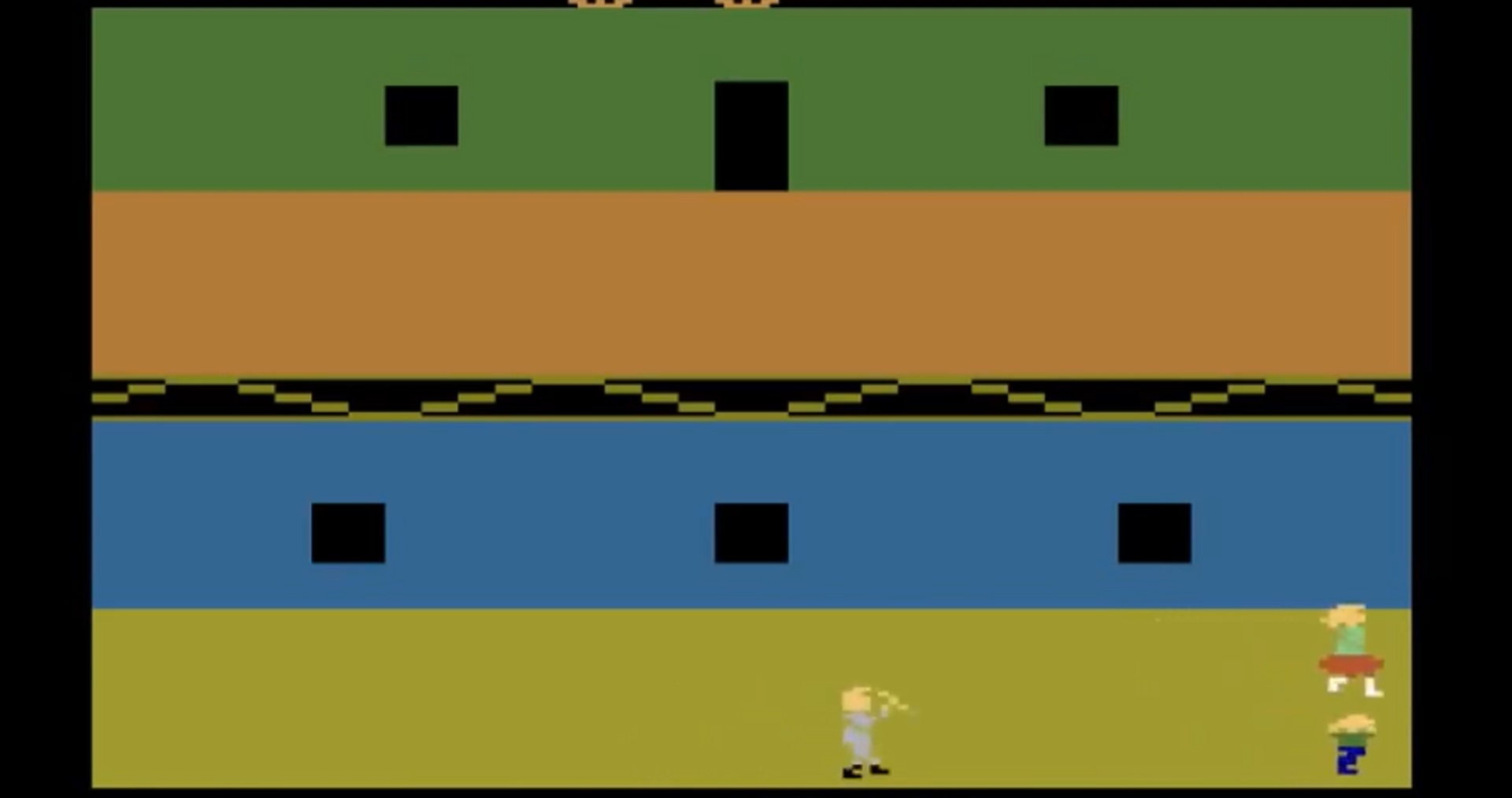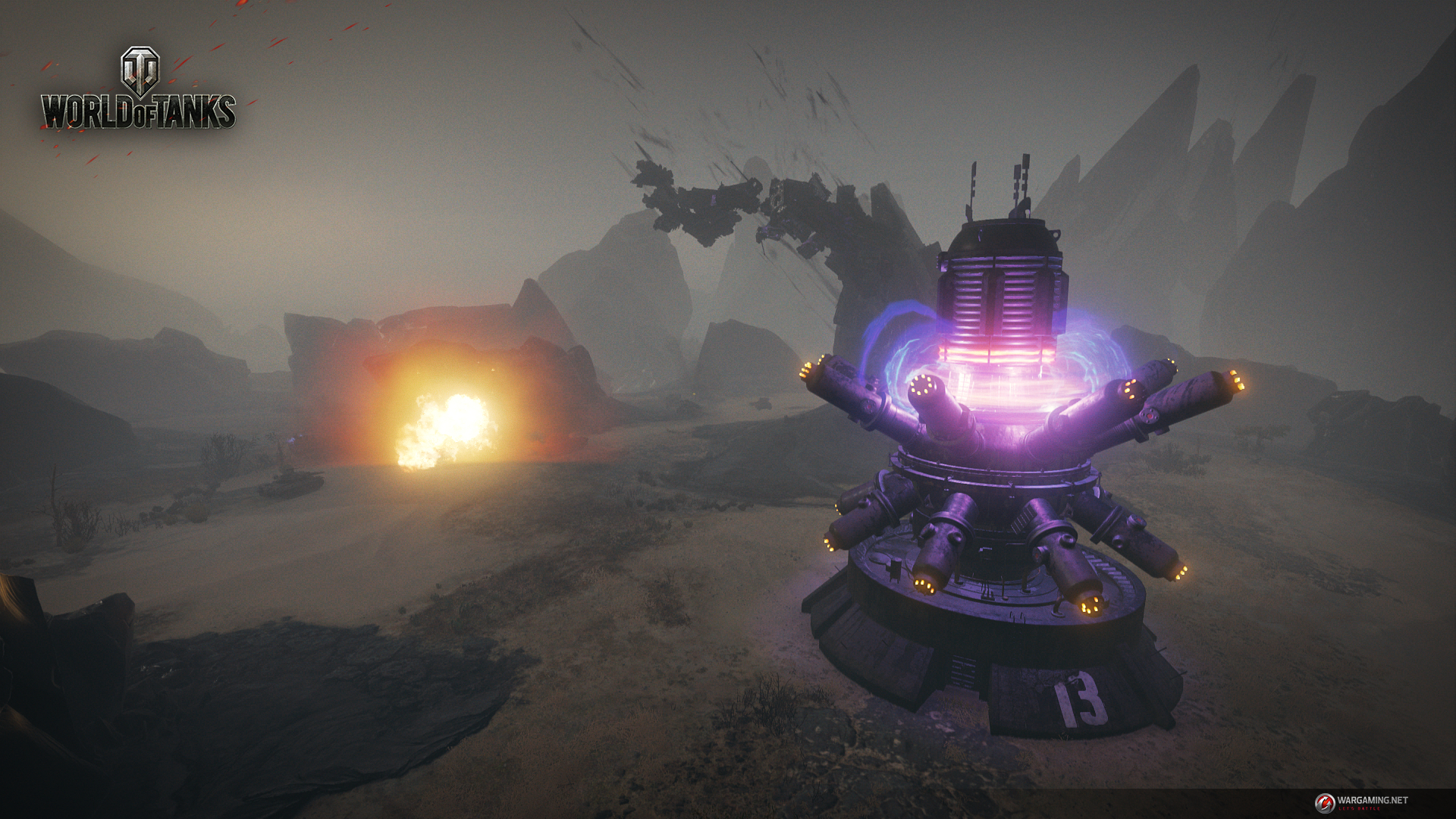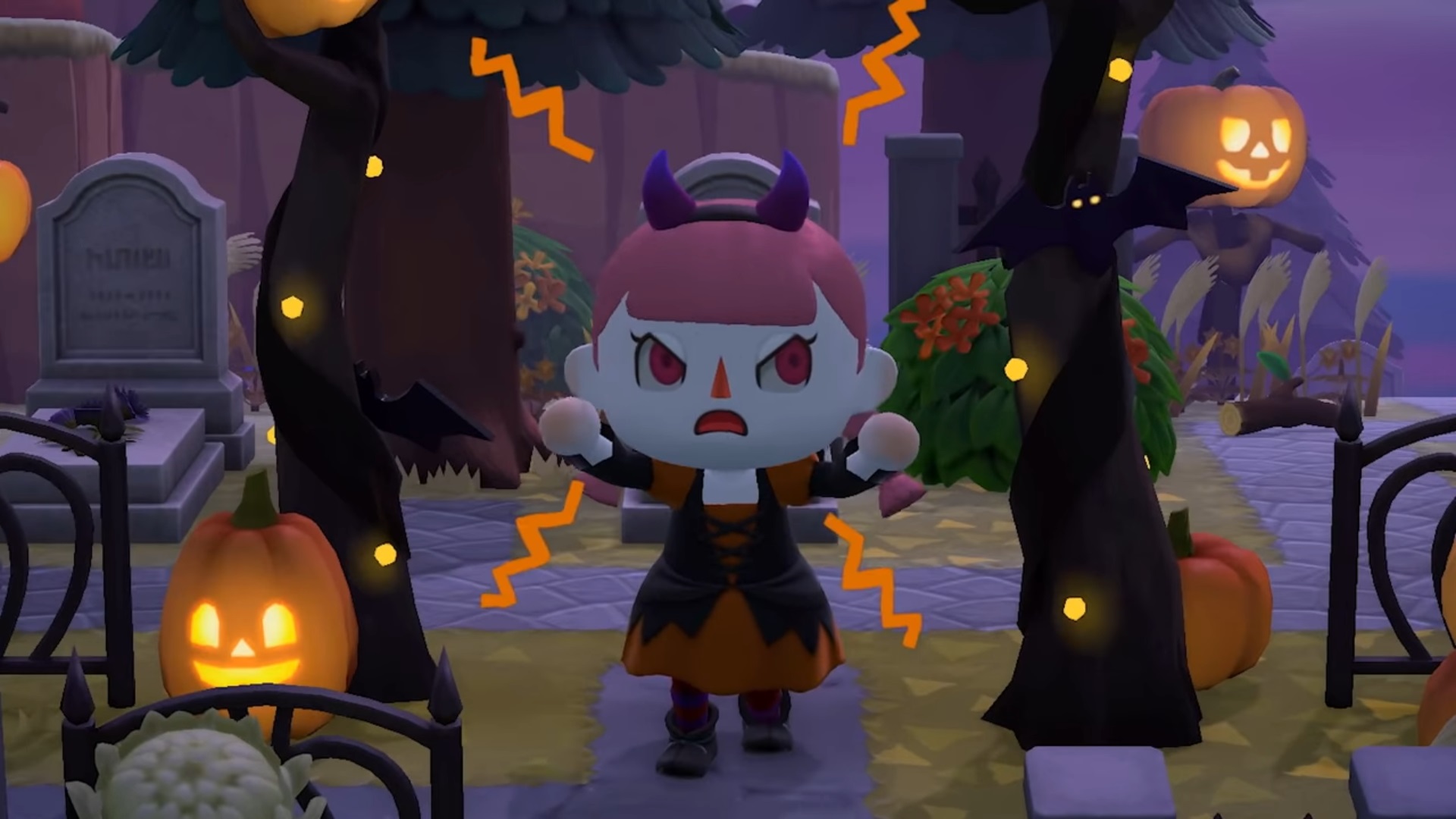
Halloween’s Bloody, Pixelated Deaths Are a Vital Piece of Horror History
“…it takes a sick human being to enjoy this sick game.” – Video Gaming and Computer Gaming Illustrated
Halloween Kills is available to watch today, and with that, I can’t help but look back at the series’ importance to horror games. The genre was quite new back in 1983 when Wizard Video Games unleashed Halloween, the Atari 2600 adaptation of the original movie, on the world. As you can tell by the above quote from a review at the time, not everyone was ready for it. While it may look quaint now, its shocking depictions of death make it a vital part of the genre’s history. And, in its own way, a chilling experience even now.
An unlucky babysitter finds herself dealing with a knife-wielding killer. Getting yourself to safety is trouble enough with such a persistent foe. Michael Myers can appear from just about anywhere, and will chase you down when he finds you. Our killer is after the children under your care, too, so you need to get them out of harm’s way as well. You can do this by grabbing the kids and rushing them to safe rooms located at the far ends of the house. I guess Myers is afraid of outside walls or something? You can also try to stab Mikey if you can find a knife and feel you’re capable of fighting him toe-to-toe. I wouldn’t. Just throwing that out there.

The presentation in Halloween is, unsurprisingly, looking a little dated at this point almost forty years later. The various rooms of the house are filled with garish colors. Our babysitter, the child, and Myers are a few blocks of drab pixels that give you an idea of what you’re dealing with. It’s enough that it makes things pretty clear, though. Especially so if Myers catches up to you when you’re defenseless and cuts your head off. Or the kid’s.
When Myers catches you, your head simply disappears. Blood comes out in tiny red pixel spurts as your body continues to roam around. It’s surprisingly morbid given the period it came out in. Limited visuals aside, it’s honestly pretty morbid NOW. Moreso, though, is the bloodied child Myers leaves behind if he catches the kid. It simply lies there, blood spraying from its torn neck, in a display that most developers wouldn’t dare put in their games nowadays. Not that I’m exactly keen on seeing dead children these days.
These deaths are honestly quite shocking. Yes, the early pixel artwork doesn’t give these moments a sickening, vivid detail, but these abrupt, ruthless deaths make for a gut-churning end. That the game was doing so in 1983, when the previous horror game before that, Haunted House, simply had you guiding googly eyes through a dark house full of lethal creatures, must have floored players at the time. Halloween offered gore in ways games simply hadn’t much done before.

Judging from a further excerpt from the above review, I’d say it definitely unsettled some people at the time. “If you find the murder of children diverting, you’ll enjoy this game. However, after you buy it I urge you to spend another thirty-odd bucks for a half-hour of professional help. This is a twisted, unnecessary game…”
These deaths, while lacking detail, showed a gruesome new potential in games. In games, you could die. It’s relatively common, honestly. While it’s fairly common in horror movies as well, it’s that the death as coming for you as the player. YOU are the one who will die if you fail. While many games at the time simply had you blip out of existence, Halloween would have you rushing around, blood spraying from your neck stump. All done with little playfulness or humor. Just straightforward, violent death. And it was YOU who would be dead.
Splatterhouse, Mortal Kombat, and many, many more horror games owe a debt to this title for breaking the ground on video game gore. And even in those games, few of them would approach that same level of viciousness that Halloween did. Yeah, the visuals don’t convey something anywhere near as gory as many games can these days. How many games are willing to have a child lying around, freshly-killed? To have violence committed on a child at all? I’m not saying I’m happy to see it in the game, but that this title went to some dark places that even modern games wouldn’t touch. It really pushed for what you could do in a horror game, or even any game.

Through that gruesome death, it aimed to connect with players like other forms of media couldn’t. You weren’t watching someone run from a killer. Weren’t reading about hiding from a murderer. YOU were running away. YOU were the one who would lose their head, or watch a child’s head get carved off if you failed. The visuals didn’t make these moments all that vivid, but when Myers was running toward you, you felt that fear. You were meant to feel the weight of what would happen if you messed up.
The most unsettling part of Halloween was how it never ended. This was the Atari era, when everything was about high scores and repeating gameplay. It was an endurance match between you and Myers, and Myers could keep this up forever. If you stab Myers or save a kid, you get some points. Every few times you do either of those actions, Myers would get a bit faster. The game would only end when he finally got you, so no matter what, eventually, you had to die. Eventually, he’d be too fast to avoid. Dying was inevitable, which is an incredible feeling to capture when creating a game about fleeing a slasher villain. You’re not going to be the final girl. You’re just another kill.
Halloween isn’t much to look at these days. It’s blocky, is full of garish colors, and lacks detail in its bloody deaths. It was an important game in bringing gore to horror games, though, and in capturing the fear you feel when knowing a violent death is waiting for you if you make a single mistake. That it did things that today’s games won’t even do shows its shocking power and its importance as part of the genre’s history.




